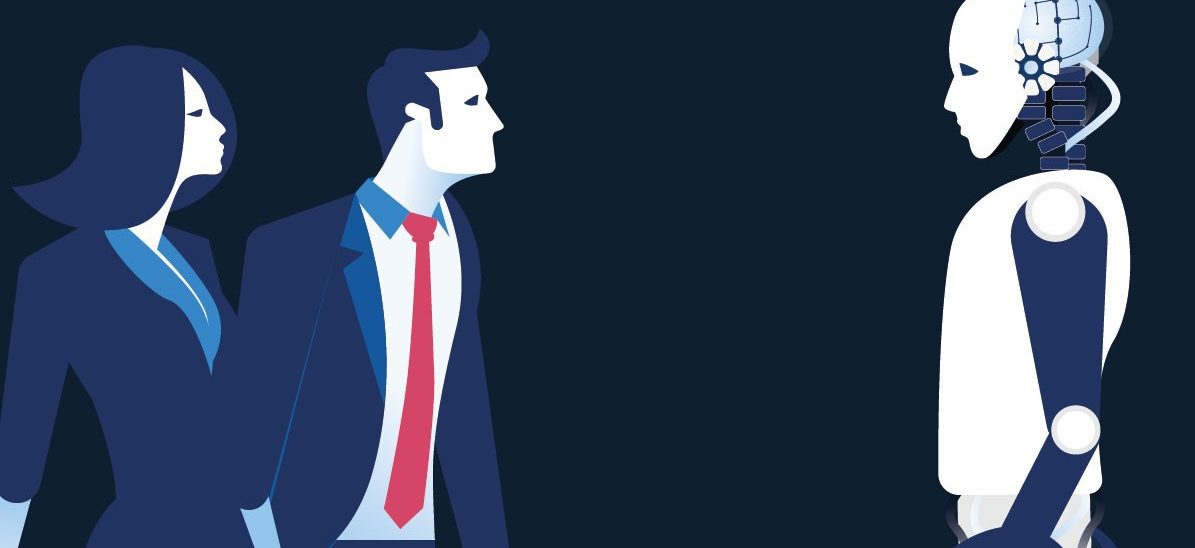Why human psychology is the key to effective human-robot interaction in the warehouse

Craig Summers, UK Managing Director of Manhattan Associates, reflects on Manhattan Associates’ annual virtual event, Momentum Connect and its biggest takeaway. This was being treated to an excellent speaker session from Kate Darling, Professor of human-robot interaction, tech policy and ethics at MIT, looking at how people project human traits, qualities and emotions onto animals and robots.
The recent news from DHL that the logistics giant plans to deploy an additional 1,000 Locus Robotics (the Massachusetts-based robotic start-up) picking robots to more than twenty locations across the USA and Europe by the end of next year, is only the latest in a long line of news over the last twelve months to underline that robots (particularly in the warehouse and supply chain context) are very much here to stay.
Anthropomorphise
It’s critical that organizations look at the technology practicalities of these deployments (such as software, platform and API integration) and the ‘softer’ elements such as the psychological interactions between human workers and their metallic co-bot colleagues.
If you own a pet, be it anything as small as a goldfish, right up to the size of a dog or even a horse, the chances are, you will have heard of the terms anthropomorphism. Deriving from its verb form anthropomorphize, itself derived from the Greek word ánthrōpos (ἄνθρωπος, lit. human) and morphē (μορφή, form), the term simply means to project human traits, qualities, emotions and behaviours onto non-humans. According to Darling, these projections are not exclusive to just our pets; however, instead, they are tipping over into our increasing interactions with robots too.
Robots as Living Things
According to Darling, humans feel a certain empathy towards robots; even ones as simple as a Roomba vacuum cleaner. “It is not the most sophisticated machine in the world; it just moves around the floor cleaning it. Even so, 80% of people who own one have their own name for it. Furthermore, according to iRobot (the manufacturing company), when these Roombas suffer a breakdown, most people prefer to have their automated vacuum cleaners repaired rather than replaced with a new one.” This shows the illogical yet very real bond humans will readily form with even the most basic of robots.
Darling went on to explain that even she (a professor in the study of human-robot interaction) has experienced feelings for basic robots in the past. In 2007 she bought a toy robot dinosaur; “because it had motors, touch sensors and an infrared camera. I thought it was really interesting because it reproduced certain behaviours very well. When I showed it to my friends, some of them grabbed it by the tail and twisted it until it would cry. Even knowing that it was a robot, I felt certain anguish.” It was as a result of this experience, the researcher became interested in the field of social robotics.
We are certainly at a very interesting moment in human history when it comes to merging the robot-human world. For at least the last six decades we have had robots in factories and warehouses,
but now they are reaching out into other spaces, even our homes and workplaces. While the levels of AI and ML have rapidly accelerated to the point that these new generations of robots can think, make autonomous decisions, and learn, they are not alive and cannot feel; instead, we, as human beings who feel for them. It’s this eureka moment of clarity that Darling insists we need to recognize, emphasize and keep in mind in order to integrate technology more effectively into our daily working (and personal) lives.
Different Types of Intelligence
A commonly made a mistake according to the MIT’s Darling, is comparing artificial intelligence with human intelligence: “It’s an analogy that doesn’t make sense to me,” she commented. “Sure, it is true that there are already machines that are much more intelligent than us; that can do infinite calculations, beat us at chess and identify patterns that we would not recognize. However, they are not able to perceive the world or learn in the way that a human does – it is a different type of intelligence.”
Robots therefore should be seen as complementary to human roles not as a replacement for them, such as a co-bot interacting and assisting a picker in a warehouse environment when a product is too heavy or an awkward size. A greater understanding of how we’re hard-wired as a species to interact with other non-human objects is the key to designing more effective and efficient robots. Both supply chains (more broadly) and warehouses (more specifically) stand to significantly benefit from the exploration and advances in understanding our need to anthropomorphize robots.
With the pandemic finish line in sight – queue a collective inhalation of breath and crossed fingers – now is the perfect time to start assessing which areas of society, commerce and business have been most changed by the events of the past 18 months. In terms of robotics, investments and uptake have gone through the roof in the last year for obvious reasons and certainly show no sign of slowing down any time soon, so now may well be the perfect time to seriously consider robotics and automation as part of your organization’s long-term business strategy.
The Future of the Robot
Covid-19 is destined to have a long-term, profound and lasting impact on the way we all work and live; and increasingly, robots and automation are going to play a significant role in both. We may be on course for a true watershed moment in terms of robot uptake in warehouses and supply chains. With more research into the human need to anthropomorphize robots including both warehouse co-bots and in-house automated helpers, the robots of the future will likely look, feel (see I’ve done it right there; robots can’t feel!) and behave very differently to those which we interact with on a near-daily basis today.
READ MORE:
- Has COVID-19 sparked a rise in robot cleaners?
- Pepper the robot is coming to SMEs
- Forescout to deliver the first zero-trust solution for OT, IoT, healthcare and hybrid cloud segmentation
- How AI Can assist sustainability in the healthcare industry
For more information about how you can revolutionize your warehouse spaces and supply chain operations with the help of robotics, find out more about the Manhattan Automation Network and those partners such as Locus Robotics, Kindred AI and Right Hand Robotics who are already part of it here.
For more news from Top Business Tech, don’t forget to subscribe to our daily bulletin!
